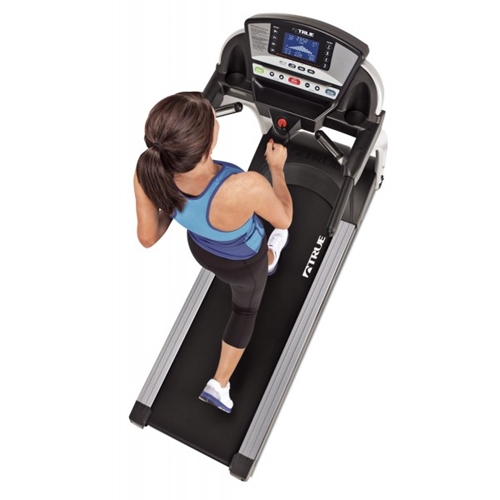
Ramp up your run
 Some ambitious runners find that they want to constantly ramp up their workouts by adding another challenge to their usual routine. However, even the most casual of athletes can derive many benefits from ramping things up – literally. Use the advanced features of equipment such as the TRUE M30Â Home Treadmill to run at anywhere from a 1 to 15 percent incline, and you’ll find that it can test your body more than running on a flat surface ever could.Â
Some ambitious runners find that they want to constantly ramp up their workouts by adding another challenge to their usual routine. However, even the most casual of athletes can derive many benefits from ramping things up – literally. Use the advanced features of equipment such as the TRUE M30Â Home Treadmill to run at anywhere from a 1 to 15 percent incline, and you’ll find that it can test your body more than running on a flat surface ever could.Â
Running at an incline is significantly harder, making the exercise more effective. Done correctly, it can burn more fat, build more muscle and increase overall fitness more than flat running because the motion involves more of your muscles. The incline will work your glutes and legs more than you’re used to with running on an even surface, offering the potential for better results in a shorter period.
Some experts advise that a 2 percent incline is necessary on your home treadmill just to effectively simulate outdoor running and the slight undulations you may not even notice. For those who want a more challenging indoor run, here’s how to ramp it up safely and effectively.
Work gradually
Though this should go without saying, immediately putting your treadmill on the highest incline setting is not the best way to ease into this style of running. Much like you wouldn’t begin with a dead sprint, start slowly and increase as time goes on, both short and long term.
The TRUE M50Â Home Treadmill allows users to create a custom workout program for their run, and many choose to utilize this option by designing a hills course. This is especially useful in very cold or warm climates where outdoor running is not always possible.
Runner’s World recommends a workout wherein you start at a zero incline and continue building every two minutes, eventually reaching the highest setting. Then, after reaching the peak of your simulated hill, you descend in the same fashion. This will train your body to handle the rigors of an intimidating hill even when you can’t run it in person. With this workout in your arsenal, you can take on the real hill feeling much more confident in your ability to conquer it.
Focus on your form when running hills, as it will change. You’ll need more arm drive, and your hips and knees will have to work harder to maintain your posture while you ascend the incline. As hard as it may be, you may be so pleased with the results that you add hills to your usual routine.
